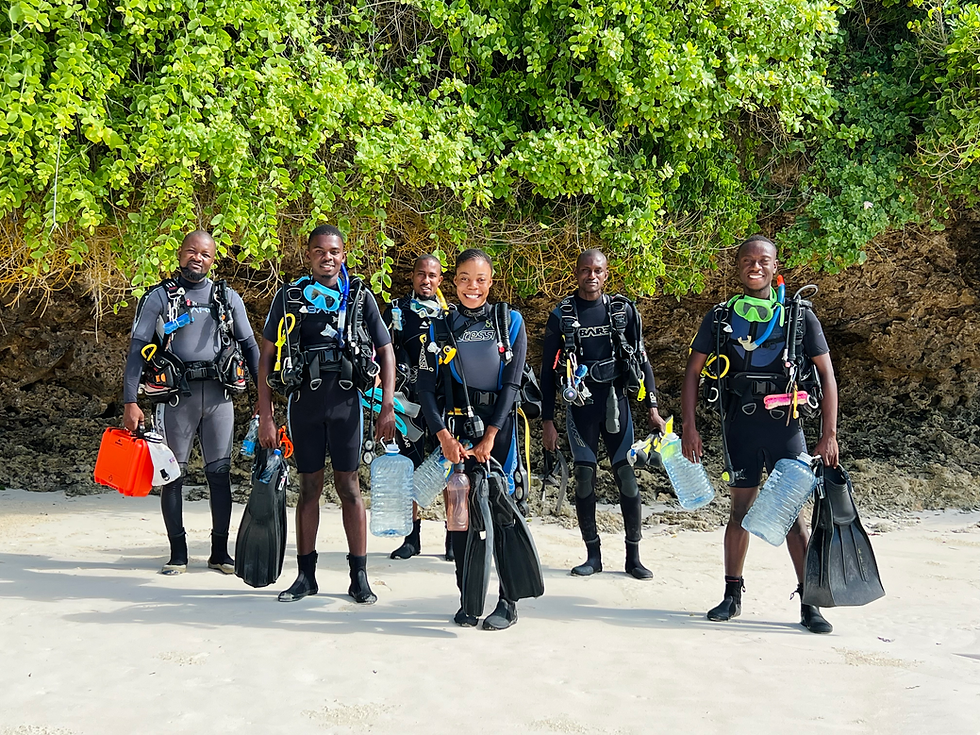From coral bleaching to recovery
- Guido Paap

- May 20, 2024
- 1 min read
Updated: Jul 29, 2024

In a previous blog post, we highlighted the significant challenge our coral reef restoration project faced due to rising ocean temperatures and the resultant coral bleaching. Here’s an update based on the data we have gathered during recent dives and the current status of our coral nurseries.
Total coral fragments expected in the nurseries: 1120 (100%)
Total corals fragments dead: 614 (55%)
Total corals fragments alive: 506 (45%)
of which corals resilient : 149 (13%)
and corals recovering: 357 (32%)
While over half of our coral fragments have been lost, the survival and resilience of the remaining corals are encouraging. The 55% mortality rate underscores the severe impact of rising ocean temperatures and coral bleaching. This loss is significant, but not unexpected given the extreme weather conditions during the last 2 months. The 45% of corals that remain alive are crucial to our restoration efforts. Within this group, 13% we have classified as resilient, showing strong resistance to thermal stress. These resilient corals are vital for our restoration project aimed at enhancing the overall resilience of coral populations. The 32% of corals that are recovering from the bleaching provide a hopeful sign, but we have to keep on monitoring them.
We are focusing on cultivating the resilient corals identified in our nurseries. By selectively breeding these hardy specimens, we aim to create a more robust nursery stock that can better withstand future temperature increases. Stay tuned for more updates on our progress and efforts to help restoring the coral reefs of Diani Beach.







Comments